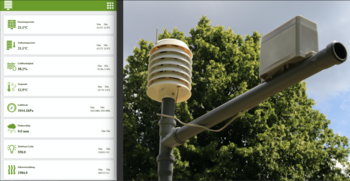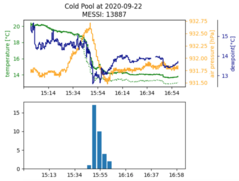Citizen Science
The communication of weather forecasts, weather warnings and their uncertainty will be examined within the framework of the HErZ project WEXICOM, especially with regard to the effectiveness of communication. In addition to various forms of weather forecasts and warnings, we will examine the extent to which the inclusion of citizens in weather observation has a positive effect on the understanding of probability-based weather forecasts and warnings.
For this "Citizen Science" gives the opportunity of a direct involvement of citizens in current research projects via the participation in weather observations within the framework of a citizen measurement network. On the one hand, this allows for the possibility of interactively conveying and evaluating knowledge. On the other hand, it helps to support the professional measurement network by a large number of participants, which could not be achieved by a limited team of scientists. Thus, citizens actively contribute to research through the monitoring network and help to improve it. In addition, we expect findings on how to communicate probability-based weather forecasts and warnings as well as other scientific results of the measurement campaign to the population.
Scientific Goals
- Installation of a citizen monitoring network for the extension and support of the professional measuring network in the context of the measuring campaign FESSTVaL with additionally about 100 measuring devices.
- Investigation of the effect of participation in the measurement campaign on
- the understanding of weather warnings and probabilistic forecasts,
- the general understanding of weather forecasts and weather risks, as well as
- the social acceptance of weather research.
Workshops and Measurements
We develop a measuring device (MESSI - my own subscale instrument) for the citizen science measuring network. It measures the air temperature, humidity, air pressure and various radiation parameters, and sends them via radio (Long Range Wide Area Network, LoRaWAN) in real time. The housing and the radiation shield were specially designed for the public measurement network and are produced by use of 3D printing. The measuring device is to be assembled in workshops by the participating citizens. The measured data can be viewed by the participants during the measurement campaign via a web-based platform. Accompanying presentations are given on the understanding of probabilistic weather forecasting and also on the installation of the measuring device. Within these workshops, questionnaires will be used to test the level of knowledge and understanding of weather forecasts and warnings at the beginning and at the end of the measurement campaign.


